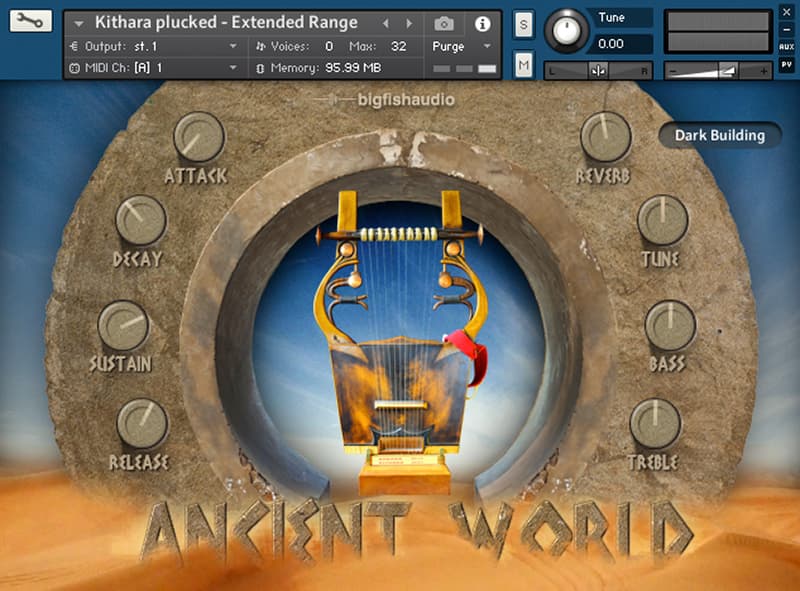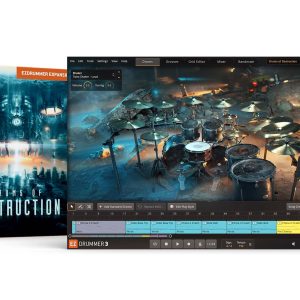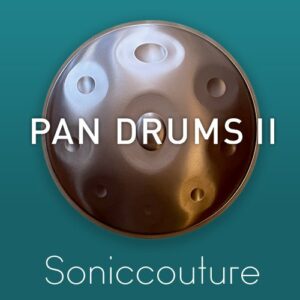Big Fish Audio – Ancient World

£24.00
Supported Device

- Full Version
- Lifetime Activation!
Direct Download
Instant download directly from our super-fast servers full speedy downloads no wait time, no limits unlimited downloads
Virus Free
Our all items on our website are Virus free and tested with "McAfee Secure"
Timely Update
After publishing the new update from author we upload the latest file on our website
Live Support
we are provide you 24/7 Days Support and You be Able to request a item
Product details
To Install & Use This Library Requires KONTAKT PRO You Have To Download KONTAKT PRO First From Our Website
Big Fish Audio and Funk/Soul Productions are proud to bring you Ancient World: Instruments of Antiquity. Ancient World is an exciting journey to the origins of musical sound. All of the most important instruments of antiquity have been extensively sampled for the first time ever.
Master Luthier, Nikolaos Brass’ collection of ancient Greek instruments forms the basis of Ancient World. Brass dedicated his life to the research and re-creation of ancient musical instruments, using the same methods and materials which were used in ages past. Some of the instruments, such as the Syntonon and Copperphone, are extremely rare with only two or three existing worldwide! The multi-sampling of these beautiful instruments presents a rich array of String, Wind, and Percussion implementations.
All of the performance techniques have been meticulously sampled. For instance, the string instruments have articulations such as plucked, with and without vibrato, harmonics, plectrum, tremolo, arpeggios, glissandos, behind the bridge, slides, and more. In some cases, up to thirty samples per note have been recorded.
Ancient World includes eleven string instruments, eight wind instruments, and thirteen percussion instruments. Additionally, almost every instrument comes with a set of inspiring looped performances.
In order to expand the geographical and historical boundaries, many rare instruments from Medieval times, the Mediterranean basin, as well as the Middle-East have been added.
Ancient World is an indispensable tool for composers who are active in film, TV and video games.

| Syntonon The Syntonon was created by the great Greek philosopher and mathematician Pythagoras, who had also established the fundamentals of music theory that we are still using today. The Syntonon was an “experimental” instrument as well as the ancestor of the cimbalom. Paintings or sculptures depicting the instrument are not available. Nikolaos Brass re-created the instrument solely based on descriptions found in ancient texts. “Ancient World” features the 1st recreated Syntonon in modern history. |
 |
 |
Copperphone (Chalkeophonon) The Copperphone was an experimental instrument that was considered difficult to play. The most interesting feature of the Copperphone is that a single hit on one disc can produce a very long tail (over one minute), where the overtones move and morph in a beautifully sounding manner. The Copperphone was designed by the great philosopher and mathematician Pythagoras. We are proud to present the rarest copy of the Copperphone. |
| Phorminx The Phorminx was probably the most ancient string instrument of the Greeks. It was considered a “sacred” instrument, played by the God Phoebus, using a golden plectrum. The later Lyra and Kithara are considered as off-springs of Phorminx. |
 |
 |
Pandoura The Pandoura was one of the most ancient instruments, its origins dating back to Mesopotamia in the 3rd millennium BC. The most important feature of this medium-sized instrument was its fretboard, which was used by the left hand of the player to shorten the length of the strings. In this respect, its concept has influenced the development of all the fretted and fretless instruments of the history of music: modern guitars, lutes, mandolin, the violin family, etc. |
| Ney The Ney is one of the most important instruments in Middle Eastern music (the name of the instrument is of Persian origins). It is also one of the oldest musical instruments, as its use goes back 4,500-5,000 years. |
 |
Lyra The Lyra was one of the most important and well-known stringed instruments of Greek Antiquity. It originally came from Thrace and was related to the cult of Apollo. It had a nice sound and color but limited sound and volume, hence its performance was restricted to rather small chambers (an equivalent of our “chamber music”). |
KOMPLETE KONTROL & MASCHINE INTEGRATION
Ancient World has been designed for seamless integration with the Komplete Kontrol and Maschine, offering you a unique hands-on experience. Easily manipulate the interface using the controls of all NKS compatible hardware.

• 32 multi-sampled instruments
• 146 unique patches
• Over 400 looped and tempo-syncing performances
• User-friendly interface
• NKS Compatible
• Comes with Kontakt 5 Player
• Created in Kontakt 5.8.1
STRINGS
• Kithara
• Three unique Lyras
• Pandoura
• Phorminx
• Samvyke
• Syntonon
• Triangle (Harp)
• Varvitos
WINDS
• Diaulos
• Flogera
• Kavali
• Mantoura
• Ney
• Pan Flute
• Pastoral Flute
PERCUSSION
• Antique Cymbals
• Bendir
• Clay Pot
• Copperphone (Chalkeophonon)
• Crotala
• Formiskoi
• Fruit Shells
• Seistron
• Sleigh Bells
• Small Cymbals
• Square Drum
• Tambourine
• Water Pumpkins
INSTRUMENT DETAILS:
STRINGS:
Kithara
The Kithara was considered the “professional” instrument of antiquity. This stringed instrument had a robust construction with two short arms and a characteristic square soundboard. It began with just three strings but evolved to twelve strings during the 5th Century BC.
Lyra
The Lyra was one of the most important and well-known stringed instruments of Greek Antiquity. It originally came from Thrace and was related to the cult of Apollo. It had a nice sound and color but limited sound and volume, hence its performance was restricted to rather small chambers (an equivalent of our “chamber music”).
Pandoura
The Pandoura was one of the most ancient instruments, its origins dating back to Mesopotamia in the 3rd millennium BC. The most important feature of this medium-sized instrument was its fretboard, which was used by the left hand of the player to shorten the length of the strings. In this respect, its concept has influenced the development of all the fretted and fretless instruments of the history of music: modern guitars, lutes, mandolin, the violin family and so on.
Phorminx
The Phorminx was probably the most ancient string instrument of the Greeks. It was considered a “sacred” instrument, played by the God Phoebus, using a golden plectrum. The later Lyra and Kithara are considered as off-springs of Phorminx.
Samvyke
The old sources describe the Samvyke as a “sensual” instrument, which was used in symposiums and orgies. It was exclusively played by lightly-dressed women, who created an erotic atmosphere. The Samvyke was a rather large instrument with a length of over one meter. Its shape resembled a siege-machine and was thus named after one.
Syntonon
The Syntonon was created by the great Greek philosopher and mathematician Pythagoras, who had also established the fundamentals of music theory that we are still using today. The Syntonon was an “experimental” instrument as well as the ancestor of the cimbalom. Paintings or sculptures depicting the instrument are not available. Nikolaos Brass re-created the instrument solely based on descriptions found in ancient texts. “Ancient World” features the 1st recreated Syntonon in modern history.
Triangle (Harp)
The Triengle was mainly played by women to accompany feasts. The 1st appearance of the instrument was during the Cyclades Civilization (2,800 BC). The sensual-erotic music played by the Triangle was very popular. Later-on, Triangle was also performed by male-players in concerts and used in music lessons.
Varvitos
The Varvitos was used extensively in symposiums, feasts as well as in Dionysus-orgies. The soundboard was made out of tortoiseshell and was smaller than the ones used for Lyras. The side arms were much longer than the Lyra’s arms. For this reason, the Varvitos was able to produce full and “round”-sounding low notes, not unlike our bass instruments.
WINDS:
Diaulos
Diaulos was an instrument that used two separate pipes, each with its own mouthpiece. The two pipes were arranged in a V-form, and the same musician played both. Diaulos players were seasoned professionals because the instrument performance incorporated advanced playing techniques, such as the circular breathing.
Flogera
The Flogera (or floghera) is a type of flute used in Greek folk music. It is a simple end-blown bamboo flute without a fipple, which is played by directing a narrow air stream against its sharp, open upper end. It typically has seven finger holes.
Kavali
The Kavali (or Kaval) is a chromatic end-blown flute traditionally played throughout Armenia, the Balkans, Greece, and Turkey. The Kavali is primarily associated with mountain shepherds.
Mantoura
Mantoura (or Mandoura or Padura and Bandura) was mainly played in Crete and Greece and was made from a reed. Making and playing the Mantoura is also regarded as a first step before one learns to play the Tsabouna and Bagpipe.
Ney
The Ney is one of the most important instruments in Middle Eastern music (the name of the instrument is of Persian origins). It is also one of the oldest musical instruments, as its use goes back 4,500-5,000 years. Experienced ney-players often use a set of several neys in various keys, although it is possible (albeit difficult) to play chromatically on any Ney.
Pan Flute
The Pan Flute is an ancient instrument, which was used for sacred ceremonies. It was associated with demigod Pan, who was the protector of the woods and the shepherds. Later on, the shape of the Pan Flute inspired the construction of the hydraulis, which was, in fact, an early version of the harmonium or church organ.
Pastoral Flute
The Pastoral Flute has its origins to the ancient single pipe (Aulos), which was also the ancestor of the flute. It was an instrument easy to build and its construction and use go back to the Paleolithic era. Early on, this instrument was made using bones, and later bamboo or metal.
PERCUSSION:
Antique Cymbals
Antique Cymbals are the ancestors of the modern metal cymbals.They were used during the orgiastic ceremonies of Kybele and Dionysus.
Bendir
The Bendir is a wooden frame-drum of North Africa and the Middle East. It is a traditional instrument that is played throughout North Africa, as well as in Sufi ceremonies; it was also played in Ancient Egypt and Mesopotamia.
Clay Pot
Actually, a clay water jug with an additional hole, the Clay Pot was originally used in ceremonies and was played by hand. There are many ways that the pitches can be changed, depending on how the hand above the small upper hole is positioned. The player can also produce a bass sound by quickly hitting the large hole, and the whole pot can be played with the fingers.
Copperphone (Chalkeophonon)
The Copperphone was an experimental instrument that was considered difficult to play. The most interesting feature of the Copperphone is that a single hit on one disc can produce a very long tail (over one minute), where the overtones move and morph in a beautifully sounding manner. The Copperphone was designed by the great philosopher and mathematician Pythagoras. We are proud to present the rarest copy of the Copperphone.
Crotala
Crotala were some of the most ancient instruments and were considered as an extension of the hands and feet to keep the pace and mark the beat. Some wind players attached a pair of Crotala to their legs to mark the beat while also playing a wind instrument.
Formiskoi
Formiskoi were played in pairs, like modern maracas. Formiskoi were used to mark the rhythm, provide additional colors, and to connect two phrases with a crescendo.
Fruit Shells
Dried fruit shells were used as shakers to mark the beat and enhance the orchestration with their particular timbre.
Seistron
The Seistron came to Greece from Egypt. These instruments were used in litanies and consisted of two parts: the handle and the moving parts, which were metal or wooden bars. Small stones and bones were also used.
Sleigh Bells
A jingle bell or sleigh bell is a type of bell which produces a distinctive ‘jingle’ sound, especially in large numbers. The simplest jingle bells are produced from a single piece of sheet metal bent into a roughly spherical shape to contain a small ball bearing or short piece of metal rod.
Small Cymbals
Small cymbals played both in pairs and singly. They were originally used in ceremonies, and later to enrich the percussion palette.
Square Drum
Square Drums are simple goatskin drums played with hands or sticks. They were typically made with sawed wood and fastened with nails. The skin is tunable and easy to adjust to the desired pitch.
Tambourine
The tambourine is a percussion instrument consisting of a frame, often of wood, with pairs of small metal jingles, called “zills.” This instrument is found in many forms of music: Turkish folk music, Greek folk music, Persian music, and more.
Water Pumpkins
Also called “Water Drums” these instruments can be found in Africa (Mali) and other continents. Water Pumpkins are played with the hands, or with soft mallets. The deeper bowl is filled with water, the smaller one is set on the water. The pitch of the water drums can be tuned by changing the water level inside the floating shell.







There are no reviews yet.